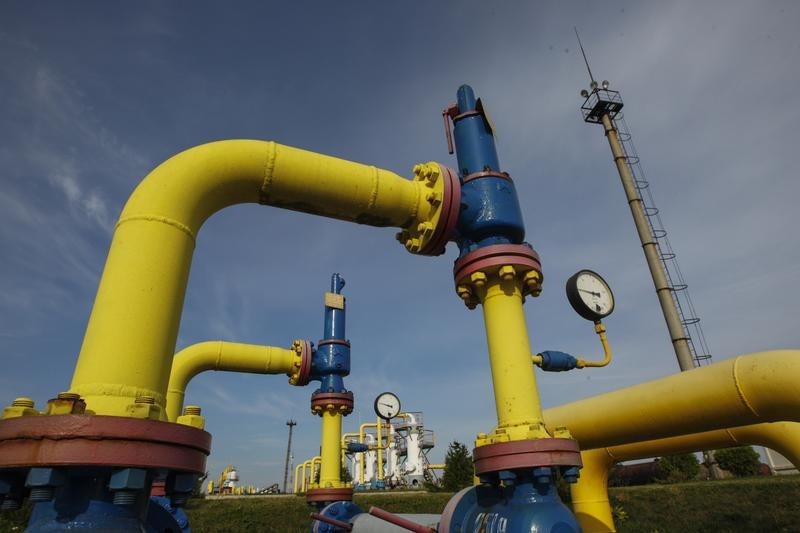Investing.com - U.S. natural gas futures were lower in early North American trade on Monday, tracking weakness in oil prices and as last week’s short-covering rally ebbed.
Natural gas for delivery in April on the New York Mercantile Exchange slumped 2.0 cents, or 1.1%, to trade at $1.802 per million British thermal units by 12:50GMT, or 8:50AM ET. Prices fell by as much as 2.79% earlier to an intraday low of $1.771.
Sentiment in the energy complex took a hit as oil prices pulled back sharply from last week’s three-month highs after Iran dashed hopes that there would be a coordinated production freeze any time soon.
Brent crude futures fell back below $40 a barrel, while U.S. crude was down almost 2% after Iran's oil minister said it would only join the output freeze group once they reached production of 4 million barrels a day.
Prices came under additional pressure as last week’s impressive technical rally appeared to come to an end. Natural gas futures surged 19.4 cents, or 9.36%, last week, as traders closed out bets on lower prices after futures held above key support levels.
Natural gas prices rose nearly 12% since falling to $1.611 on March 4, a level not seen since August 1998, as a failure to break below $1.610 prompted market players to cover short positions amid bullish chart signals.
Losses were limited amid indications of reduced U.S. shale drilling activity. Baker Hughes said late Friday that the number of rigs drilling for natural gas in the U.S. decreased by three last week to 94, the lowest level since at least 1987.
The number of U.S. drilling rigs is viewed as a proxy for activity in the energy industry. A lower rig count is usually a bullish sign as it signals potentially lower production in the future.
Natural gas prices have been on a downward trend since early 2014, as natural gas producers, especially shale drillers, pulled near record amounts of the fuel out of the ground.
Natural gas storage in the U.S. fell by 57 billion cubic feet last week, according to the U.S. Energy Information Administration, in line with expectations and following a draw of 48 billion cubic feet in the prior week.
Total U.S. natural gas storage stood at 2.479 trillion cubic feet, 36.8% higher than levels at this time a year ago and 29.4% above the five-year average for this time of year.
Some market experts worry there may be too much gas left in storage at the end of March when utilities traditionally start injecting the fuel back into storage for the next winter.
The EIA's next storage report is due on Thursday, March 17. Inventories fell by 43 billion cubic feet in the same week last year, while the five-year average change for the week is a drawdown of 71 billion cubic feet.
